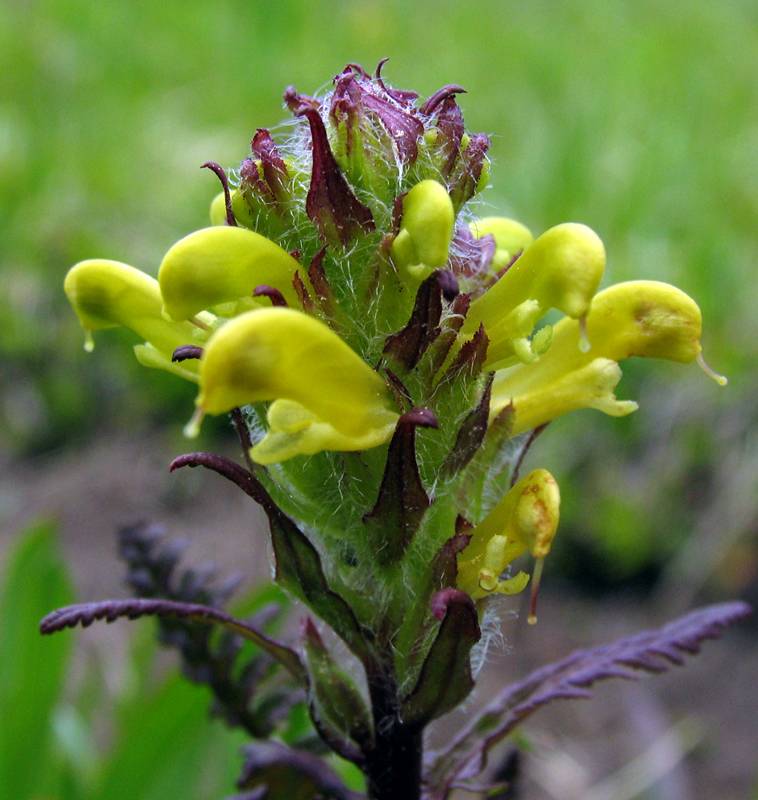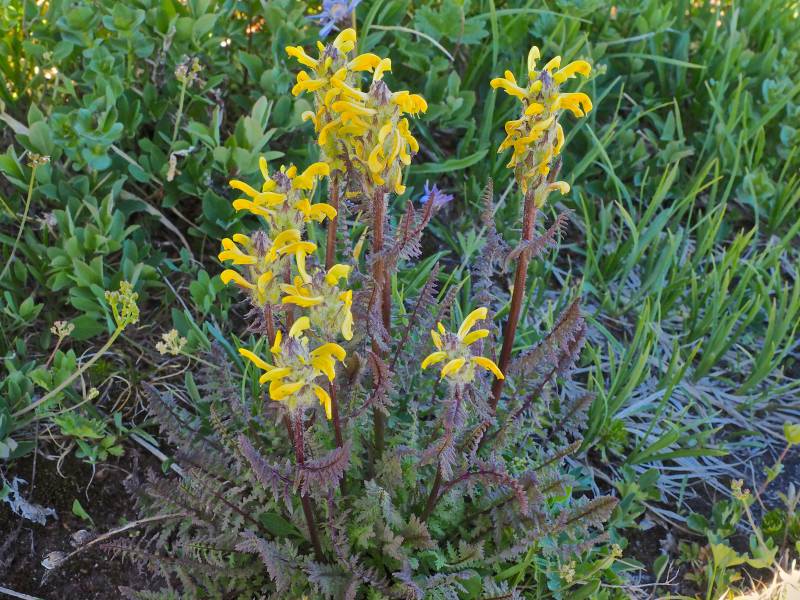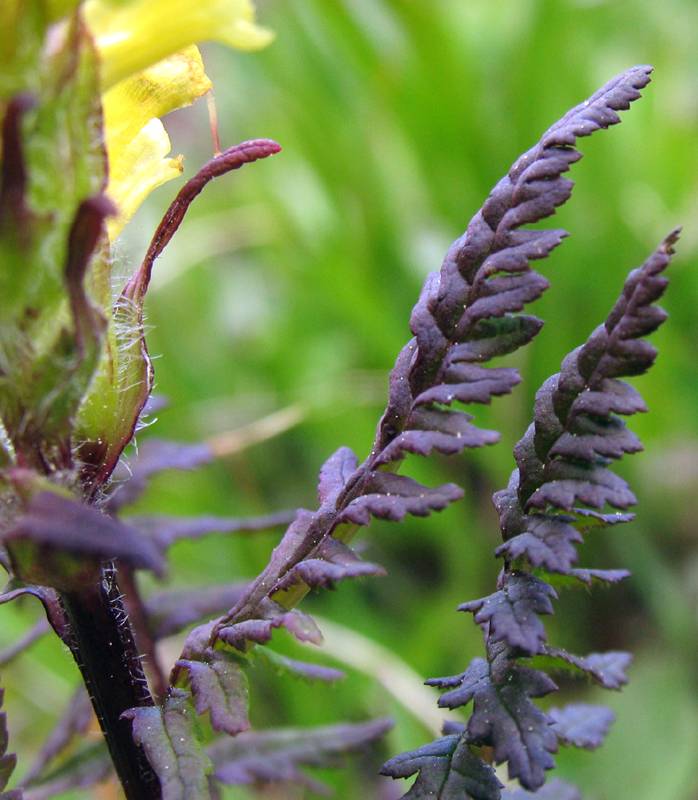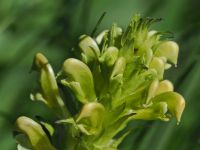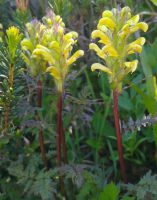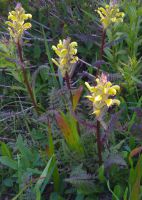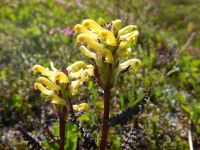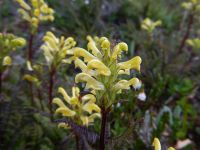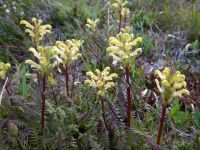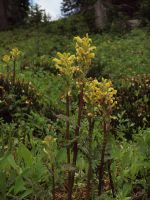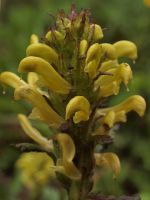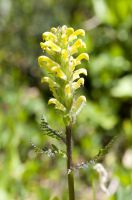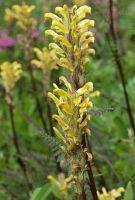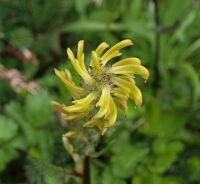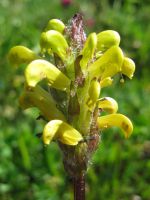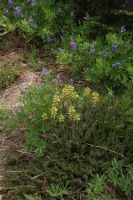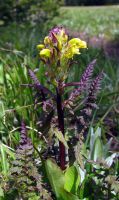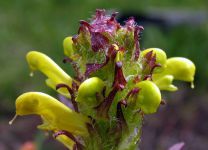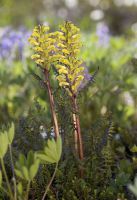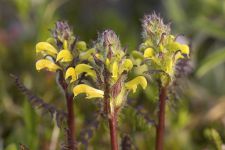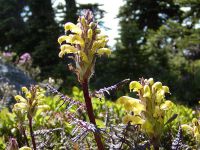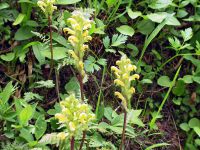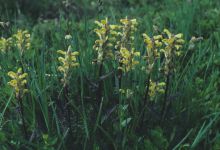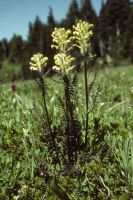Distribution: Endemic to Mount Rainier National Park area in Washington.
Habitat: Moist alpine meadows.
Flowers: July-August
Origin: Native
Growth Duration: Perennial
Conservation Status: Sensitive in Washington (WANHP)
Pollination: Bumblebees, bees, butterflies, hummingbirds
Coarsely fibrous-rooted perennial, the clustered stems 1.5-4 dm. high, glabrous below the villous inflorescence.
Basal leaves 5-15 cm. long, the blade longer than the petiole, up to 3 cm. wide, pinnate, the leaflets sharply incised and often again toothed; cauline leaves similar, several, reduced upward and becoming sessile.
Inflorescence a spike-like raceme, the bracts toothed; calyx lobes 5, tapered, the upper the shortest, the others partly united into 2 lateral pairs; corolla pale creamy-yellow, 1.5 cm. long, bilabiate, the upper lip about equaling the tube, hooded but beakless; lower lip small, 3-lobed; stigma capitate.
Capsule glabrous, flattened, curved.
Publication: Bulletin of the Torrey Botanical Club 55(6): 317-318. 1928.
PNW Herbaria: Specimen records of Pedicularis rainierensis in the Consortium of Pacific Northwest Herbaria database
WA Flora Checklist: Pedicularis rainierensis checklist entry
OregonFlora: Pedicularis rainierensis information
E-Flora BC: Pedicularis rainierensis atlas page
CalPhotos: Pedicularis rainierensis photos

